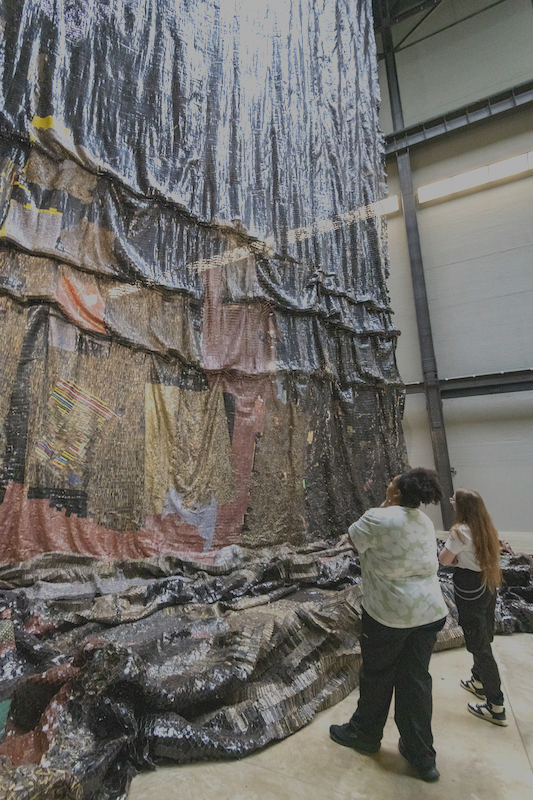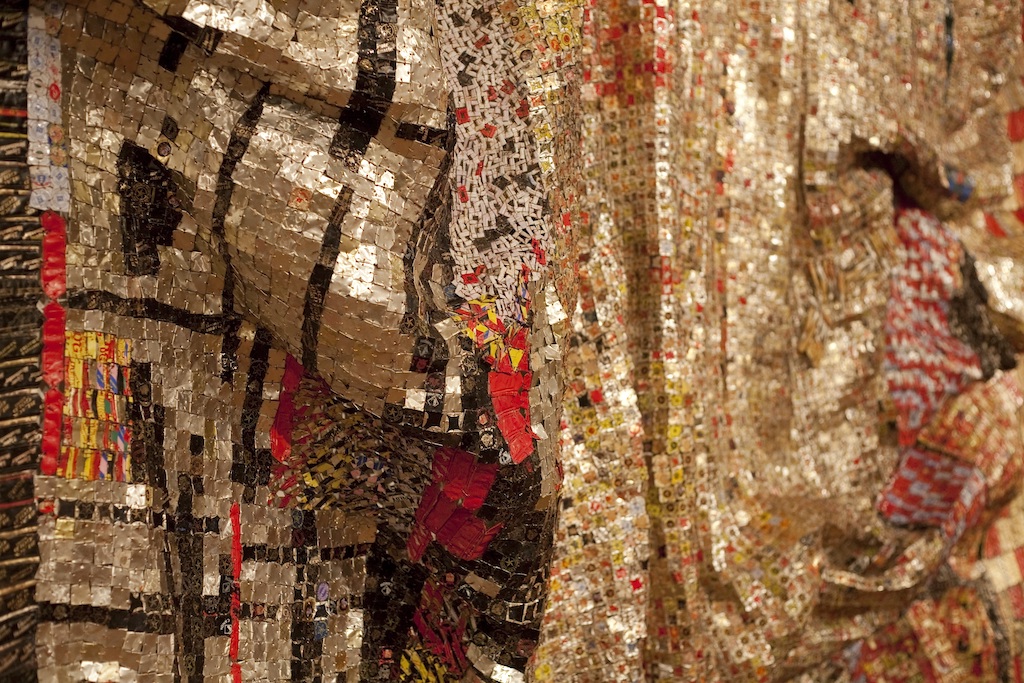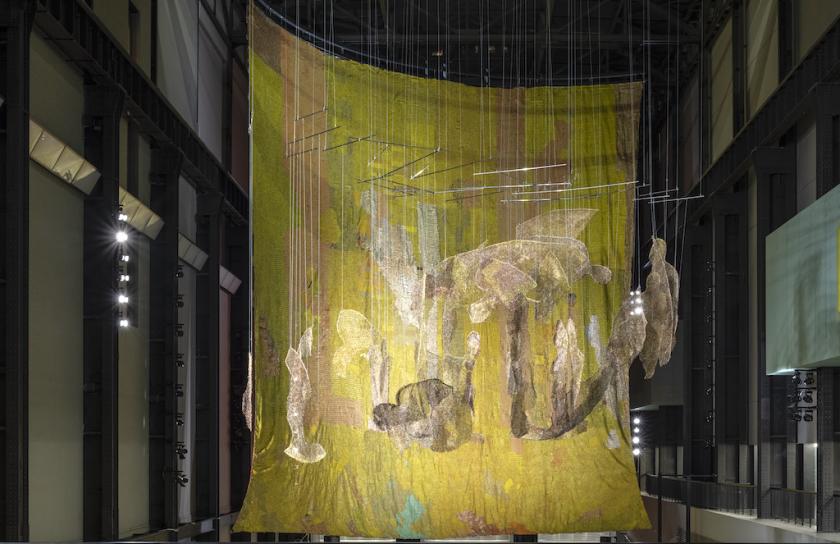The enormous volume of Tate Modern’s Turbine Hall has overwhelmed many of those invited to exhibit there, but Ghanaian artist El Anatsui responded to the challenge with magnificent hangings that tame the huge, industrial space.
Made from thousands of bottle tops and slivers of metal sewn together by an army of helpers, the cloths are monumental yet intricately detailed. Suspended just inside the door is a billowing sail, pinkish red on one side and golden yellow on the other. Glinting under the spotlights, tiny reflective surfaces create a shimmering impression of movement.
 Above the bridge is a mobile of amoeboid shapes made from thin, bottle-top seals wired together to create a glowing, translucent mesh (main picture). Seen from a certain viewpoint, the various elements coalesce into a globe as though to offer a vision of unity among disparate peoples, nations and factions.
Above the bridge is a mobile of amoeboid shapes made from thin, bottle-top seals wired together to create a glowing, translucent mesh (main picture). Seen from a certain viewpoint, the various elements coalesce into a globe as though to offer a vision of unity among disparate peoples, nations and factions.
Hanging at the far end is the tour de force – a dense black wall dangling from the ceiling and crumpling onto the floor in a series of waves (pictured right). Standing close to this immense curtain is to be dwarfed by its awesome scale and physicality, but this also enables you to appreciate the amazing complexity of its structure. The myriad little pieces from which it is made reminded me of the scales of an armadillo; they create the impression of stuff that is tough but flexible, and delicate yet resilient.
So a glorious surprise awaits you when you go round the other side. A gleaming array of gold, silver, red, blue and yellow patches is threaded onto narrow strips of metal that hang loose from the main structure with an air as casual as the riffs in improvised jazz (pictured below: detail of a similar work). Gazing up at this double-sided miracle – sombre on the front, exuberant on the reverse – I found myself grinning foolishly with absolute delight.
Weaving a narrative around El Anatsui’s installation, the Tate describes it as “a landscape of symbols: the moon, the sail, the wave, and the wall”. And referring to the dark days of colonialism when 90 percent of Africa was colonised, a third of it by Britain, and the 10 million people transported from its shores into slavery, they describe the work as an exploration of “elemental forces interwoven with human histories of power, oppression, dispersion and survival.” Whether you find such an interpretation enriches the work or burdens it with too literal a reading is a matter of choice. Either with or without this kind of analysis, these glorious hangings are equally uplifting.
Whether you find such an interpretation enriches the work or burdens it with too literal a reading is a matter of choice. Either with or without this kind of analysis, these glorious hangings are equally uplifting.










![SEX MONEY RACE RELIGION [2016] by Gilbert and George. Installation shot of Gilbert & George 21ST CENTURY PICTURES Hayward Gallery](/sites/default/files/styles/thumbnail_125_x_125_/public/mastimages/Gilbert%20%26%20George_%2021ST%20CENTURY%20PICTURES.%20SEX%20MONEY%20RACE%20RELIGION%20%5B2016%5D.%20Photo_%20Mark%20Blower.%20Courtesy%20of%20the%20Gilbert%20%26%20George%20and%20the%20Hayward%20Gallery._0.jpg?itok=3oW-Y84i)




Add comment